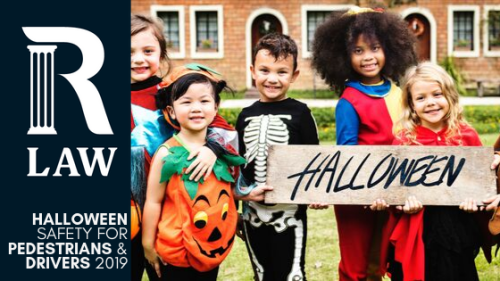Halloween Safety: 31 Things to Consider for Pedestrians and Drivers

Halloween should be one of the most memorable holidays in a child's life. It's the time of the year a child could receive free candy from neighbors and be whoever they dream they could be: a princess, a superhero, a firefighter or their favorite TV star. Though it could be one of the most fun days of the year, it also happens to be one of the most dangerous for pedestrians.
According to the National Safety Council and several other studies, Halloween is the day when children are more than 2x as likely to be fatally hit by a car than on any other day. On this night, four times the number of children wander off into the streets at dusk than usual.
Though it’s improving, Miami-Dade County has one of the highest rates of pedestrian fatalities among U.S. cities—and Florida's other cities aren't far behind. On Halloween, especially at dusk, it is imperative that parents and drivers across Florida do all they can to ensure kids' safety.
Scary Stats in the U.S.:
- More than 2X as many fatal child pedestrian accidents happen on Halloween than on the average day.
- Most dangerous hours are from 4:30pm - 9:30pm (60% of fatal accidents occur then).
- 70% of fatal accidents occur when crossing the street mid-block.
- Drivers under age 26 took part in nearly 1/3 of Halloween fatal crashes involving children.
- The National Highway Traffic Safety Administration's study showed that drunk drivers caused 44% of fatal collisions on Halloween (2012 to 2016).
RLaw's Tips for Drivers:
Halloween is an exciting day for children. They'll forget to be cautious and dart unexpectedly across roads or driveways, or pop out from behind parked cars or trees. Kids may wear dark costumes, making them difficult to see. To boost your vision and visibility, start using your headlights by dusk, your brights at night, and keep your windshield clean.
- Keep an eye out for pedestrians.
- Drive extra carefully when entering and exiting driveways.
- Drive slowly all evening, at least 5 mph below speed limit on major roads.
- Discourage new, inexperienced drivers from driving on Halloween.
- Don't text and drive.
- Don't don't drive impaired.
- Watch for kids on medians, curbs, shoulder and roadway.
- Obey all traffic and pedestrian regulations.
RLaw's Tips for Safer Trick-or-Treating:
- Trick-or-treating should end before sundown, but adults and children should still bring flashlights.
- Avoid poorly-lit areas.
- Avoid complexes without adequate security.
- Avoid masks that impair vision.
- Many communities take part in other Halloween activities, such as Trunk or Treat, which don’t involve crossing busy streets at or near dusk.
- Only cross at intersections and crosswalks.
- Don’t run.
- An adult should accompany children 13 and under.
- Stay on the sidewalk or path—keep off the roadway.
- Plan and review older children’s routes—they can send a live location via iPhone, Google Maps or WhatsApp to ensure their safety.
- Put electronic devices down, headphones off; keep head up and eyes alert.
- Instruct children only to travel in familiar, well-lit areas, and to travel in groups.
- Never cut across yards or use alleys.
- Make yourself as visible to motorists as possible, especially at night and in low light by carrying a flashlight, and wearing reflective clothing.
- Even if you have the right of way, make sure traffic has stopped or passed before you step into the street.
- If no sidewalk is available, walk at the farthest edge of the roadway facing traffic.
- Never cross the street from between parked cars.
- Agree on specific time children should return home.

Sources:
https://www.nhtsa.gov/halloween-safety-tips
DISCLAIMER: This post is intended to provide general information to our readers. None of the information contained in this post should be construed to constitute legal or medical advice. Laws vary by jurisdiction and cases often turn on minor differences in fact. Do not rely exclusively on any of the information contained in this post. Always seek further assistance from a legal or medical professional where necessary.